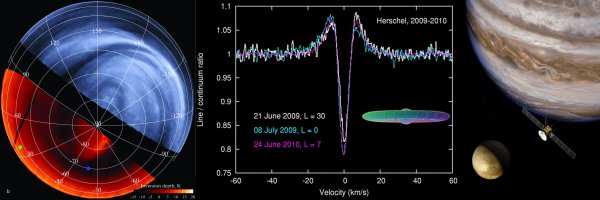
Planetary Atmospheres
The group „Planetary Atmospheres“ investigates atmospheres of bodies in the Solar System and beyond.
This includes planets and their satellites, comets, outgassing minor planets and other potentially active bodies in our Solar System. The structure, dynamics, and chemistry of these bodies’ atmospheres are modeled using general circulation models for mars, Saturn, and Jupiter, and hydrodynamic and kinetic models for satellites, comets, and other active bodies. The latter include modelling interactions between the body’s surface and atmosphere as well as interactions with space. In addition, the group develops and builds instruments for space mission, that observe these objects in the wavelength range from centimeters to micrometers (microwave, submillimeter and far infrared), mostly using heterodyne spectroscopy techniques developed in the department’s microwave laboratory. From these data, geophysical information such as 3d profiles of atmospheric composition, temperatures, and winds can be derived.


